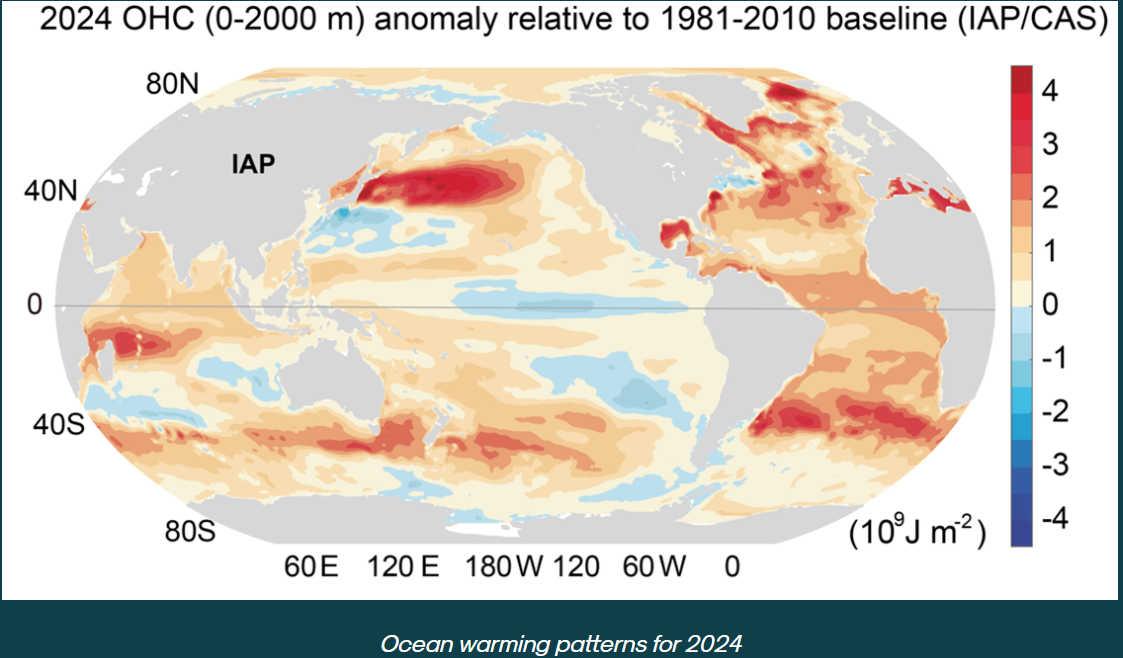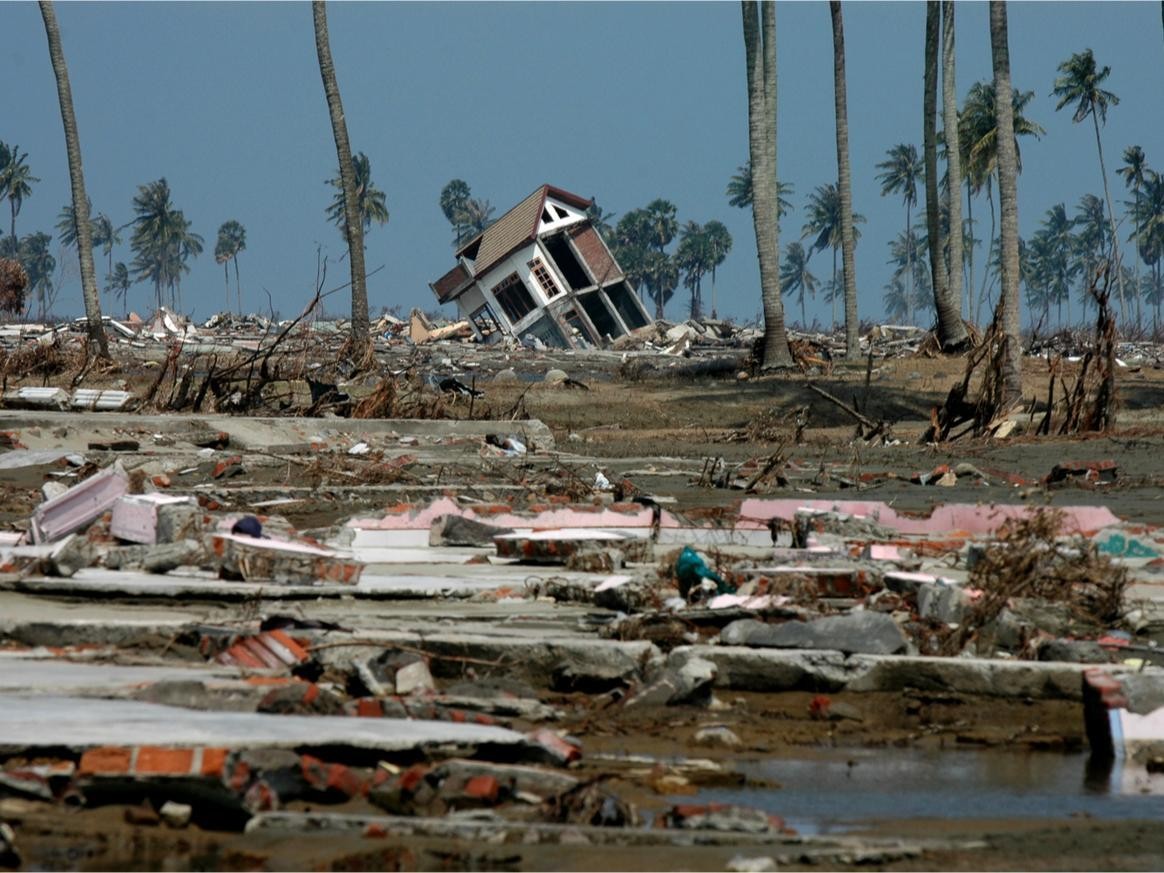Ocean temperatures reach record high in 2024, aggravating extreme weather events
Sea surface temperatures and deeper water temperatures have registered new record high temperatures triggered by human induced climate change.
By Editorial Desk / Jan 24, 2025

Image Courtesy: Earth.com
The global oceans have set new record with the highest average temperatures in 2024, according to the latest study. This is another milestone to follow in the year, which was declared as the hottest on record, triggered by human induced global warming.
The study ‘Record High Temperatures in the Ocean in 2024’ noted that the ocean's heating has continued in 2024 in response to increased greenhouse gas concentrations in the atmosphere, despite the transition from an El Niño to neutral conditions. Both global sea surface temperature (SST) and upper 2000 m ocean heat content (OHC) reached unprecedented highs in the historical record.
The 2024 annual mean global SST was 0.05°C–0.07°C higher than in 2023, and a new record for the instrumentation era. The report noted that the global SST continued its record-high values from 2023 into the first half of 2024, and declined slightly in the second half of 2024, resulting in an annual mean of 0.61°C ± 0.02°C (IAP/CAS data) above the 1981–2010 baseline, slightly higher than the 2023 annual-mean value. The record-high values of 2024 SST and OHC continue to indicate unabated trends of global heating.

The team of 54 scientists from seven countries carried out research and found that six out of the eight ocean regions investigated, including the Indian Ocean, tropical Atlantic, Mediterranean Sea, North Atlantic, North Pacific, and Southern Ocean, showed record-high OHC values in 2024.
Ocean Warming: A robust metric of climate change
About 90% of the heat accumulated in the climate system is stored in the ocean, increasing ocean temperatures and ocean heat content (OHC). Thus, OHC is a key climate indicator for monitoring planetary warming. Due to the ocean’s large heat capacity and immense volume, the change in OHC is characterized by much smaller month-to-month and year-to-year fluctuations as compared to the surface temperature, making OHC a robust metric of climate change.
“The main way the ocean continues to influence the climate is through accompanying increases in water vapor in the atmosphere that leads to the damaging increases in extremes in the hydrological cycle. Water vapor is also a powerful greenhouse gas and increased heating leads to drying and risk of drought and wildfire. But it also fuels storms of all sorts and leads to risk of flooding. That includes hurricanes and typhoons.” said Dr Kevin Trenberth, senior scientist, National Center for Atmospheric Research, USA and Co-Author.
Impact of ocean warming
Ocean warming substantially impacts the major earth system components and is instrumental in triggering extreme weather and ocean events around the globe.
Ocean warming contributes to over one-third of the global mean sea level rise due to thermal expansion, dominating regional sea level patterns. The 16 ZJ increase of OHC in 2024 compared with 2023 corresponds to a steric sea level rise of ~1.0 mm, with a total of ~54 mm since 1960. Continuous rise in the sea level is a potential threat to coastal infrastructure and habitats that would be impacted by saltwater intrusion, coastal erosion, and flooding in low-lying areas.
The study also noted a deeper impact of ocean warming on the intensification of typhoons, hurricanes, and marine heatwaves. The extra heat and moisture released by the oceans into the atmosphere make storms more severe, causing heavier rainfall, stronger winds, and flash flooding. The rise in ocean temperatures has led to more rapid intensification of storms and slower decay after landfall, increasing flooding risks related to tropical cyclones.
Ocean warming is also contributing to ocean deoxygenation, which along with impacting marine life and ecosystems, also hampers humans and our terrestrial ecosystems.
“The ocean is our sentinel for planetary warming, acting as the major sink of surplus heat accumulating in Earth climate system as a result of anthropogenic emissions,” said Dr. Karina von Schuckmann, Mercator Ocean International and Co-author of the study.
According to the IPCC report, until we reach net-zero emissions, the ocean warming acceleration trend will continue, and OHC would likely continue to break records. Improved monitoring and understanding of the ocean are essential for driving efforts to assess and address climate change, support adaptation strategies, and promote sustainable, climate-resilient pathways.
What it means for the Indian Ocean
The Indian Ocean shows a sharp OHC increase from 2023 to 2024, with a 10.3 ZJ (0.35 GJ m−2) increase from 2023 to 2024.
According to IPCC, the Indian Ocean is the hotspot for climate change as it registered the fastest ocean surface warming since the 1950s. The tropical Indian Ocean has undergone basin-wide surface warming since the start of the 20th century, with a rate of 0.12°C per decade between 1950 and 2020 which is the fastest among the tropical basins.
Indian Ocean warming contributes to increasing monsoon droughts, floods, and pre-monsoon heatwaves over South Asia. The increase in atmospheric CO2 and the associated ocean warming have very likely contributed to biogeochemical changes in the tropical Indian Ocean.
ocean heat content sea surface temperature ocean temperature global warming climate

